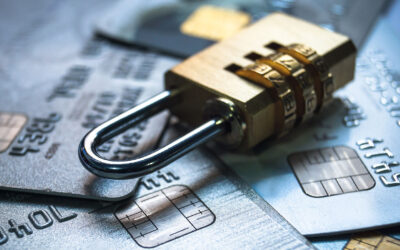 Video banking has been making waves in the financial services industry in the last few years, with more and more institutions adopting the software needed to provide this service to their customers. Having a reliable and secure video banking provider means improved loan processing times, increased user satisfaction, accelerated sales cycles, and a reduction in the time needed to address a customer’s concerns or questions.
Video banking has been making waves in the financial services industry in the last few years, with more and more institutions adopting the software needed to provide this service to their customers. Having a reliable and secure video banking provider means improved loan processing times, increased user satisfaction, accelerated sales cycles, and a reduction in the time needed to address a customer’s concerns or questions.
But with technological advances and convenience come concerns, including that in-branch and mobile video banking aren’t as safe as other methods. However, because of security and compliance requirements, banks and service providers are under a lot of pressure to ensure that customer data remains safe and protected during video banking sessions whether in-branch or on mobile devices. Before we get into what security measures are put in place for consumer protection, let’s look at the challenges facing video banking.
Challenges Facing Video Banking
While video banking has its advantages, there are existing challenges, such as security, compliance, cost, and customer preparedness. Currently, the issue that stands out the most for customers appears to be security. However, for video banking service providers like Vidyo, guaranteeing that customers’ transactions remain private is of the utmost importance. Take a look at some of the security measures used for both in-branch and mobile video banking.
Security for In-Branch & Mobile Video Banking
While some people might hop right on the bandwagon without thinking about the security risks of in-branch and mobile video banking, others are wondering if their sensitive information is staying private. The last thing customers want is for a thief to nab their account number while they’re video chatting on their mobile phone.
That’s why banking providers have to adhere to certain requirements when it comes to video usage, which includes secure communications based on industry encryption and software. Additionally, they must have mechanisms in place that authenticate users to help ensure the privacy of all of the information exchanged during the video calls. These measures are designed to prevent unauthorized users from joining a session and to protect customers’ private and banking information.
Some banks even offer drive-up video banking services that allow customers to lower the speaker volume, use their own earbuds or headset, or type their messages into a chat feature rather than communicating verbally with the video teller. By adding interactive teller machines (ITMS), you’re extending branch hours — to 24/7 — and giving your customers the power to perform transactions like cash checks, perform account transfers, and initiate money transfers without compromising security.
Industry Standards for Security in Video Communications
Governments around the world have industry-wide regulations for video communication security in the financial services industry. These standards are put in place to protect the consumer and to prevent privacy issues. It’s each institution’s responsibility to provide ongoing scrutiny and due diligence of all transactions for the length of the business relationship, improve customer identification and verification, and participate in transaction monitoring to detect. Furthermore, each institution must report any suspicious activity. There are also general risk management and anti-fraud measures that should be taken to keep customer data safe.
Using enterprise-grade security means your customers can breathe easy because, with the right provider, you can ensure that you’re meeting the most stringent standards when it comes to encryption. You’ll also get the 24/7 protection you need to meet any and all regulatory requirements.
Increasingly, banks and other financial institutions have much more control over financial security than they have had in the past. In-branch and mobile video banking can make your customers’ lives a whole lot easier and, with advances in technology that allow for a more secure experience, you can rest assured that their private information stays private. Choosing a video provider that takes security seriously by offering secure communications based on industry-standard encryptions is essential if you want to keep your customers and their data safe and secure.